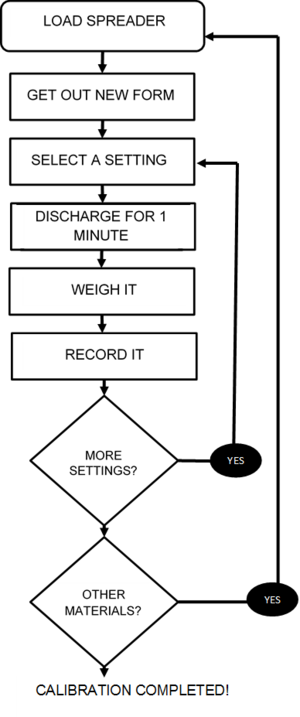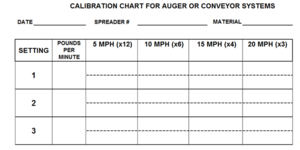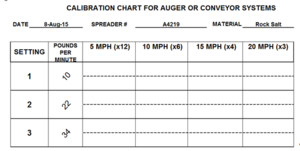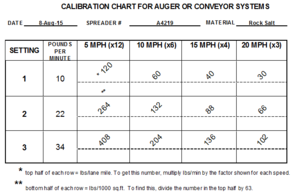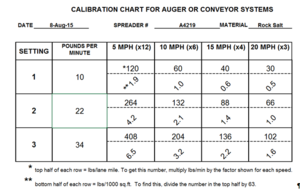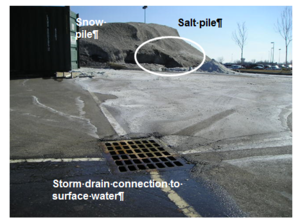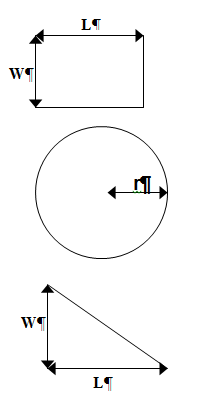
Difference between revisions of "Preparing for winter operations for winter parking lot and sidewalk maintenance"
| Line 314: | Line 314: | ||
'''Handheld spreaders and shakers, not scoops, should be used to apply deicer to steps and building entrances. This will save at least 50% of the salt normally used per winter without reducing the level of safety.''' | '''Handheld spreaders and shakers, not scoops, should be used to apply deicer to steps and building entrances. This will save at least 50% of the salt normally used per winter without reducing the level of safety.''' | ||
| + | |||
| + | ===Parking Lot Tips=== | ||
| + | *It is hard to walk and push shopping carts through salt and sand accumulations in parking lots. Sand is ineffective once it is on the pavement. Sweep it up to prevent a slippery situation. | ||
| + | *Handicap parking spots are often over-salted and over-sanded. They should get the same amount of salt or sand as other areas. | ||
| + | *Sand/salt mix generally isn’t advised; however, it may help in freezing rain situations. | ||
| + | *Always plow before applying materials. | ||
| + | *It may be possible to use a lower rate in high traffic areas. Traffic tends to help mix and melt. | ||
| + | *Store snow downhill from any salt storage areas. Avoid water running through salt storage. | ||
Revision as of 17:02, 22 February 2016
Contents
Policies/Plans
Start now—develop a maintenance policy or plan that guides winter operations. A little planning and communication up-front can help achieve better results throughout the season.
- Develop a maintenance policy or plan.
- Review the maintenance policy with the crew.
- Inform customers of the maintenance policy.
- In the plan:
- list the key actions to take during a winter event
- list the order of these actions
- address the level of service
- consider customer expectations, the hours and use of the building, priority access points and environmental concerns in the policy
- spell out any additional strategies such as routes, chemicals, application rate ranges etc.
- Follow the plan.
- Document actions.
- Review and update the maintenance policy each year.
Our waters are threatened by contracts which are based on fees for material use. This encourages overuse of materials.
Reduce liability. Establish a maintenance policy and follow it.
Training
Reduce risk by having a solid written winter maintenance policy and training program that utilizes best management practices. Schedule training for supervisors, staff, and customers.
The MPCA has three Smart Salting training classes available:
- Level 1 Winter maintenance of roads
- Level 1 Winter maintenance of parking lots/sidewalks
- Level 2 winter maintenance training for supervisory staff
Check the MPCA website to find out about upcoming training opportunities.
Getting prepared for winter
- Calculate the area of the parking lots, service roads, and sidewalks.
- Understand the environmental problems caused by snow, salt, and sand storage. Determine where and how to best store each item.
- Understand the properties of various deicers, and then select the type(s) to use.
- Train the crew on proper application rates.
- Mark islands, fire hydrants, and other landmarks that could be obscured by snow.
- Note existing conditions of curbs and other items that might be damaged by winter maintenance activities.
- Note or mark all catch basins, manholes, sidewalk segments that may cause a hazard to the plow and the operator.
Drainage
Inspect storm drains in the fall. Remove obstructions such as leaves, sticks, and trash to prepare for the spring melt. Because storm drains lead to lakes, rivers, ponds, and wetlands, never use salt to open frozen storm drains. Salt used to thaw frozen drains harms aquatic life. Use non-chemical methods such as heat to open drains.
Poor drainage on the maintenance surfaces will result in icy surfaces and will increase the risk of safety problems. These areas cause the application of salt on non-snow event days in the winter. To remedy this, inventory the site and note drainage problems. Make a checklist so the professional or client can fix these drainage problems in the summer.
Examples of drainage problems:
- Roof that drips on the steps
- Downspout discharging on sidewalk
- Sidewalk segments sloped into a V
- Potholes or low spots in parking lots
Storm drains lead to the nearest lake, river, pond, or wetland. They do not go to a treatment plant.
Equipment
The trend in winter maintenance is to use less material to accomplish the same results. Following this trend will reduce environmental impacts and save money. Below are listed a few tips, but there are many other innovations in the equipment area that can help to reduce application rates.
- Purchase a pavement sensor (Figure 8)
- Buy equipment that can deliver very low rates of granular products.
- Outfit larger trucks with ground speed controls so that the application rate changes automatically as the speed changes.
- Modify existing equipment so that it can discharge the application rates described in the “Application Rates” section. Older equipment often applies more salt than recommended.
- Outfit sidewalk spreaders with shields to better direct the spread pattern.
- Invest in equipment that can deliver liquid deicers.
- Obtain a tank for liquid storage or find a near-by source of liquids to fill up trucks.
Calibration
Calibration is an essential procedure to understand how much material will be discharged at a given setting. No matter how sophisticated or simple the operation, calibrate each piece of equipment in the fall of the year.
Calibration tells how much material will be applied at each setting.
Simple Calibration for Salt Spreaders=
If the equipment has different settings, it must be calibrated for each setting and for each product, as they all flow differently. It generally takes a team of two or three people to calibrate equipment efficiently.
Ground Speed Controlled Spreaders
Ground speed controlled spreaders are run by a computer in the cab and are tied to the speedometer and an auger or conveyor sensor in the rear of the truck. The application rate is set and the computer regulates the amount of salt discharged (regardless of the speed traveled) consistently. Most equipment used for winter maintenance of roads have ground speed controls. These are more effective and efficient systems than the manually controlled systems.
The equipment vendor will have specific calibration instructions for the operation based the type and brand of equipment. Contact them; it is in their best interest to provide instructions to calibrate and correct product use. This is the basic principle behind calibrating a ground speed controlled spreader:
- The speedometer input (sensor) lets the controller know how fast or slow the truck is traveling.
- The auger or conveyor input (sensor) tells the controller how fast or slow the auger is turning.
- To calibrate a ground oriented controller, input the pounds discharged per revolution.
- Once the computer knows the pounds/ revolution, it will calculate the necessary auger speed needed to hit the target application rates at the speed the truck is traveling.
Best bet: Contact manufacturer for calibration instructions.
Calibration allows accurate deicer use
Manual Controlled Spreaders
Manual controlled spreaders fall into two categories. Those that have an auger or conveyor and those that are gravity fed. They operate by selecting a setting that changes the size of the discharge opening and/or the auger or conveyor speed. More or less salt may be discharged depending on the speed of application. Most parking lot and sidewalk spreaders fit into one of these two categories.
All good programs are based on calibration of equipment.
The basic principle behind calibrating an auger/conveyor spreader is to choose a setting, run the spreader for a timed interval, and weigh the discharge. Record the discharge and repeat for all settings. In the end, there will be data that tells the operator how much material will be delivered at each setting. With this information, the operator can choose the proper setting. Without this information, they have no guidance on which setting to use. Calibration is different for gravity fed spreaders. There is more detail on this in a few pages.
Apply wisely. The chemicals applied cannot be recovered.
Surfaces such as pervious asphalt, pervious concrete, and pervious pavers do not experience refreeze. All melted snow and ice travel to the storage layer below the surface. Salt is generally not needed on these surfaces and sand should be avoided.
Example: Step #1, blank calibration form
See the References and Resources section for a full size form to copy for calibration. This is how the empty form looks.(Keep a stack of these on a clipboard when ready to begin the calibration.)
Example: Step #2, calibration form filled out during calibration
Fill in the header information and column 2, the discharge weight per setting.
Example: Step #3, calibration form ready to put in truck for road application'
Back in the shop, do the calculations to fill in the rest of the blanks. Multiply the weight in column 2 with the multiplier in the top row. This provides the pounds per mile that needed to fill in the table.
Some fish species are affected by concentrations of less than 1000 ppm NaCl, about 1 to 1.5 tablespoons of salt in 5 gallons of water.
Example: Step #4, calibration form ready to zip tie to hand spreader or put in truck for parking lot application.
Divide by 63 to convert pounds per lane mile to pounds per 1,000 square feet. This is very useful for parking lot and sidewalk applications.
Storage
Snow Piles:
- Store in an area where the solids can be recovered after the snow melts.
- Locate snow piles down-slope from salt and sand storage to prevent snow melt from flowing through salt or sand storage areas.
- Avoid pushing snow into lakes, ponds, wetlands, rivers, or other natural areas.
Improper storage of salts can lead to groundwater cantamination
Salt and Salt/Sand Piles:
- Storage areas often cause groundwater or surface water contamination. These problems can be easily tracked back to the source. Do not skimp on proper storage. When locating new storage for liquid or granular products investigate local visual screening ordinances.
- Indoor storage is recommended.
- Store on an impervious (water proof) surface.
- Floor should be sloped away from the door.
- Sweep loading areas back into the pile.
- Store away from lakes, rivers, ditches, storm drains, and wetland edges.
Salt storage areas are often a source of groundwater contamination. To reduce risk, have a covered storage area on an impervious pad. Take measures to keep salt or salt brine from leaving storage area.
A common mistake is storing a salt pile downhill from a snow pile
Salt Bags
- Protect from rain or snow.
- Dispose of bags properly.
- Seal all open bags.
Liquids
- Know the freezing point of the liquid. This will determine if it can be stored outdoors. Salt brine (NaCl) will freeze at -6o F.
- Tanks should be double-walled or have secondary containment. Secondary containment is like creating a bath tub around the tank so if the tank leaks, the “tub” captures the spill.
- Label the tank documenting its contents.
- Click here for more information on storage tanks see
Sand piles:
- Winter sand is typically mixed with some deicer to prevent freeze-up of the pile; therefore, sand pile storage should be the same as salt pile storage.
- Store leftover winter sand for next year. Do not use it for other purposes.
Prevent groundwater contamination. Do not locate storage areas near wells. Limestone regions with fissures and sinkholes are very prone to groundwater contamination, as are those with sandy soils.
Manual Controlled Spreaders
Manual controlled spreaders fall into two categories. Those that have an auger or conveyor and those that are gravity fed. They operate by selecting a setting that changes the size of the discharge opening and/or the auger or conveyor speed. More or less salt may be discharged depending on the speed of application. Most parking lot and sidewalk spreaders fit into one of these two categories.
All good programs are based on calibration of equipment.
The basic principle behind calibrating an auger/conveyor spreader is to choose a setting, run the spreader for a timed interval, and weigh the discharge. Record the discharge and repeat for all settings. In the end, there will be data that tells the operator how much material will be delivered at each setting. With this information, the operator can choose the proper setting. Without this information, they have no guidance on which setting to use. Calibration is different for gravity fed spreaders. There is more detail on this in a few pages.
Apply wisely. The chemicals applied cannot be recovered.
Surfaces such as pervious asphalt, pervious concrete, and pervious pavers do not experience refreeze. All melted snow and ice travel to the storage layer below the surface. Salt is generally not needed on these surfaces and sand should be avoided.
Example: Step #1, blank calibration form
See the References and Resources section for a full size form to copy for calibration. This is how the empty form looks.(Keep a stack of these on a clipboard when ready to begin the calibration.)
Example: Step #2, calibration form filled out during calibration
Fill in the header information and column 2, the discharge weight per setting.
Example: Step #3, calibration form ready to put in truck for road application'
Back in the shop, do the calculations to fill in the rest of the blanks. Multiply the weight in column 2 with the multiplier in the top row. This provides the pounds per mile that needed to fill in the table.
Some fish species are affected by concentrations of less than 1000 ppm NaCl, about 1 to 1.5 tablespoons of salt in 5 gallons of water.
Example: Step #4, calibration form ready to zip tie to hand spreader or put in truck for parking lot application.
Divide by 63 to convert pounds per lane mile to pounds per 1,000 square feet. This is very useful for parking lot and sidewalk applications.
Calculating Parking Lot or Sidewalk Area
The amount of deicer needed is based on the size of the parking lot. Here are simple ways to calculate the area of the parking lot.
Ask the property owner for a scaled map of the facility to calculate areas.
Ask the property owner for the size of the area to be treated.
Measure the parking lot.
Use an internet mapping tool to calculate areas.
The area, or square feet, of a square or rectangle is:
Length (L) X Width (W)
The area, or square feet, of a circle is:
π r2 or 3.14 x (r x r) where r is half of the distance across the circle.
The area, or square feet, of a right triangle is:
Length (L) X Width (W) divided by 2
Measuring the area, along with knowing the pavement temperature, will allow the use of the application rate charts. This will help to reduce the amount of chemicals applied.
Practices
Storage
Snow Piles:
- Store in an area where the solids can be recovered after the snow melts.
- Locate snow piles down-slope from salt and sand storage to prevent snow melt from flowing through salt or sand storage areas.
- Avoid pushing snow into lakes, ponds, wetlands, rivers, or other natural areas.
Improper storage of salts can lead to groundwater cantamination
Salt and Salt/Sand Piles:
- Storage areas often cause groundwater or surface water contamination. These problems can be easily tracked back to the source. Do not skimp on proper storage. When locating new storage for liquid or granular products investigate local visual screening ordinances.
- Indoor storage is recommended.
- Store on an impervious (water proof) surface.
- Floor should be sloped away from the door.
- Sweep loading areas back into the pile.
- Store away from lakes, rivers, ditches, storm drains, and wetland edges.
Salt storage areas are often a source of groundwater contamination. To reduce risk, have a covered storage area on an impervious pad. Take measures to keep salt or salt brine from leaving storage area.
A common mistake is storing a salt pile downhill from a snow pile
Salt Bags
- Protect from rain or snow.
- Dispose of bags properly.
- Seal all open bags.
Liquids
- Know the freezing point of the liquid. This will determine if it can be stored outdoors. Salt brine (NaCl) will freeze at -6o F.
- Tanks should be double-walled or have secondary containment. Secondary containment is like creating a bath tub around the tank so if the tank leaks, the “tub” captures the spill.
- Label the tank documenting its contents.
- Click here for more information on storage tanks see
Sand piles:
- Winter sand is typically mixed with some deicer to prevent freeze-up of the pile; therefore, sand pile storage should be the same as salt pile storage.
- Store leftover winter sand for next year. Do not use it for other purposes.
Prevent groundwater contamination. Do not locate storage areas near wells. Limestone regions with fissures and sinkholes are very prone to groundwater contamination, as are those with sandy soils.
Sidewalk Tips
Always remove snow prior to applying deicers. Plow, blow, or sweep first; the chances of refreeze diminish and slush build-up is minimized.
- Sidewalks are the most over-salted areas in winter maintenance.
- Use drop spreaders, not rotary spreaders. If using a rotary spreader, install shields to restrict the spread pattern. This minimizes the application rate and protects the vegetation.
- Many slip and fall incidents occur within 10 ft. of the curb lines. Adjust practices to include proactive measures like anti-icing.
- If the professional is not responsible for sidewalk maintenance, consider providing this information to the responsible party.
- Focus on aggressive mechanical removal of snow. The less snow, the less deicer required. This will lend itself to a safer surface.
- Deicers can harm heated sidewalks.
- Abrasives can harm permeable pavers or permeable concrete.
Salt only needs to melt 1/16 inch to prevent the bond between the pavement and the ice. Save money by applying salt before the ice bonds to the surface it doesn’t need to melt through the ice.
Building Entrances
Steps are often the most over-salted area in all of winter maintenance. This overabundance of deicer causes damage to floors inside the building as salt and/or sand is tracked in. It causes problems outside of the building with deterioration of concrete and metal structures. Over applying deicer costs more money than necessary, pollutes the water, and does not provide any additional safety. The right amount of deicer and proper mechanical removal of snow and ice will yield better results.
A free short video for small site winter maintenance is available. It is designed for those that do winter maintenance of small sites such as stairs, curb cuts, and handicap ramps. The video is a visual instruction tool useful for those who apply granular deicer to small areas outside building entrances. It recommends:
- Do site assessments, document drainage problems, and fix them in the summer (e.g., roof that drips on steps, downspout that drains to sidewalk).
- Always remove snow prior to applying deicers. The less snow, the less deicer required for a safer walking surface.
- Use the proper tool for snow and ice removal:
- Push shovel (no sides) for pushing snow.
- Scoop shovel (sides) for lifting snow.
- Broom or blower for light fluffy snow.
- Ice scraper for use under ice and compaction.
- Ice chisel for breaking open compaction, or under ice and compaction.
- Use hand-held spreaders to disperse deicers. Spreaders:
- Provide more even distribution.
- Reduce amount needed.
- Reduce tracking into buildings.
- Save money with reduced salt application.
- Save infrastructure: less salt, less corrosion.
- Look for opportunities to close extra building entrances during the winter. High maintenance, non-essential entrances are perfect candidates.
To determine the amount of deicer needed for steps, stairs, and small sites:
- Refer to the application rate chart.
- For those who do maintenance as a small part of their job, it is unlikely they will ever use an application rate chart. Here are some guidelines to get them closer to the proper rates. The goal should be:
- Even spread pattern with granules no farther than 3 in. apart
- Even spread pattern with no granules touching each other
- No piles of deicer
- No deicer on dry pavement
- No deicer in vegetation
Handheld spreaders and shakers, not scoops, should be used to apply deicer to steps and building entrances. This will save at least 50% of the salt normally used per winter without reducing the level of safety.
Parking Lot Tips
- It is hard to walk and push shopping carts through salt and sand accumulations in parking lots. Sand is ineffective once it is on the pavement. Sweep it up to prevent a slippery situation.
- Handicap parking spots are often over-salted and over-sanded. They should get the same amount of salt or sand as other areas.
- Sand/salt mix generally isn’t advised; however, it may help in freezing rain situations.
- Always plow before applying materials.
- It may be possible to use a lower rate in high traffic areas. Traffic tends to help mix and melt.
- Store snow downhill from any salt storage areas. Avoid water running through salt storage.
